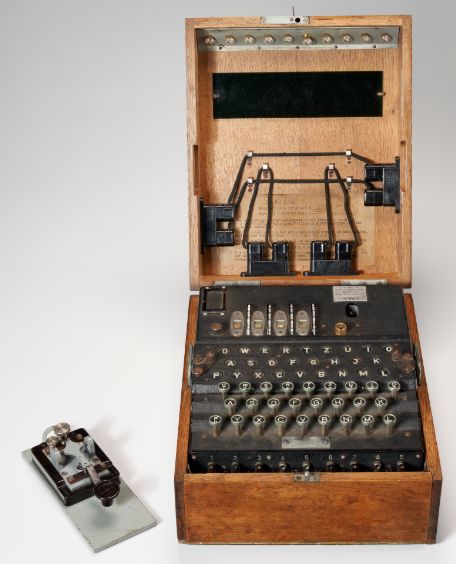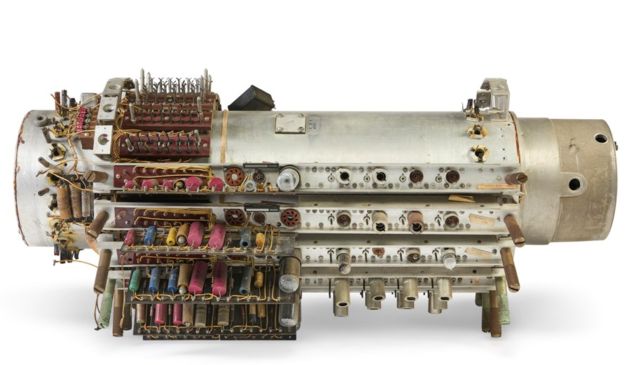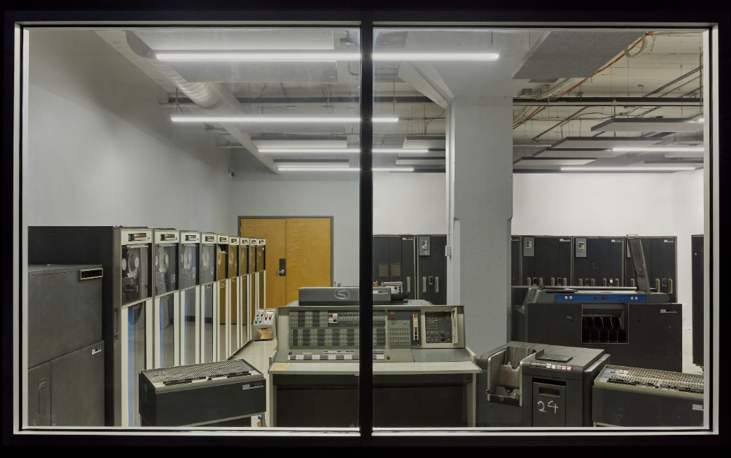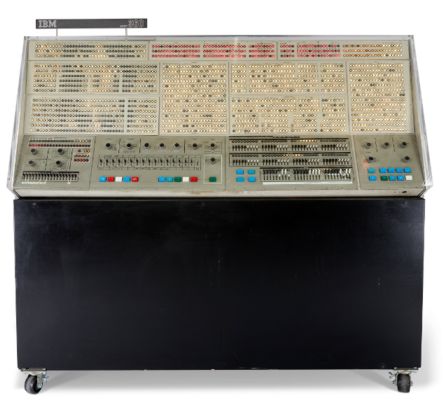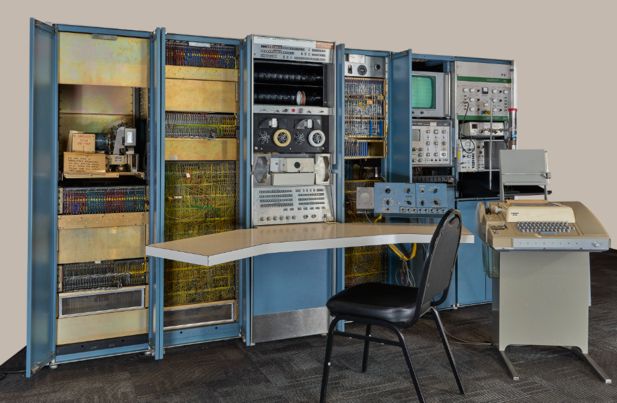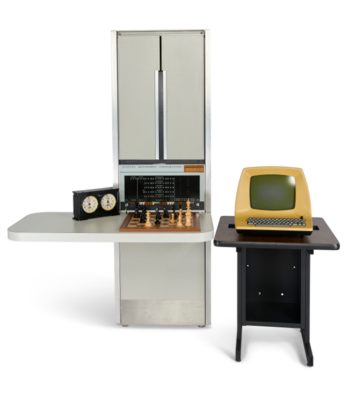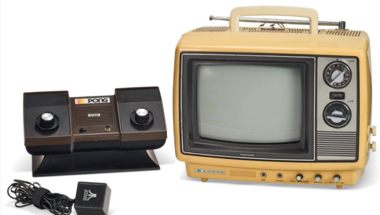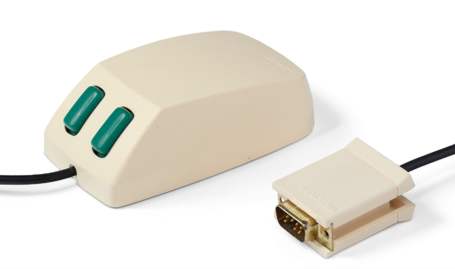| Paul Allen's Living Computers Sold For Record Prices |
| Written by Sue Gee |
| Friday, 04 October 2024 |
|
Auction house Christie's of New York broke existing records for sales of rare and iconic computers when it sold the collection that the late Paul Allen, co-founder of Microsoft, had assembled to preserve vintage and heritage computers for posterity. Founded in 2012, the Seattle-based Living Computer Museum housed a: "a grand collection of restored machines, some of the most important milestones in the history of computing" This quote comes from Stephen Jones who was Senior Restoration & Collection Manager at Living Computers. In this video, made by Christies to promote the auction he introduces some of the historic computers that he used to be responsible for, presenting a timeline that highlights the breakthroughs in technology that the machines represent: Living Computers had had been forced to close to the public by the pandemic in 2020 and never re-opened. The decision to auction off its contents was taken by the Paul G. Allen Family Foundation, founded to oversee his philanthropic venture much to the dismay of those who had entrusted treasured items to it. Among them was Bob Powell who had sold his first-generation MITS Altair 8800 microcomputer and several crates of related materials to Living Computers for $1 not long before it closed in March 2020. Although he had hoped to retrieve his Altair prior to the auction this didn't happen and it was sold for $56,700, a sum well below its estimate of $300,000-500,000 but still a record-breaking price, as outlined in Christie's Make Over $16 Million From Paul Allen's Collections which reports on some of the most surprising results of both Pushing Boundaries: Ingenuity from the Paul G. Allen Collection, the live sale held on September 12th and Firsts: The History of Computing from the Paul G. Allen Collection, the online sale that ran from August 23rd to September 12th. This article can be considered a continuation that reports on the results for other items of historic tech. Unless specified otherwise, the results prices are hammer price plus buyer's premium. Let's start with the oldest first, a four-rotor Enigma Machine manufactured by Heimsoeth & Rinke in 1941 which had the distinction of being in the live sale as opposed to the online sale, which is the case in the other lots considered here. It had an estimate of $250,000-350,000 and sold for $718,200. We've covered the auction of several of these over the years, seeing them realize from $100,000 upwards and this result seems to represent a significant jump. In the online auction, the lot that came top in terms of exceeding its estimate was a Univac Mercury Delay Line which realized $107,100, 89 times the lower bound of its estimate of $1,200-1800.
Also realizing $107,100 was an IBM 7090 that was installed at the Weapons Research Establishment, South Australia, prior to being acquired by Paul Allen for LCM. Although achieving the same hammer price, the contrast in size, and in onward shipping costs to wherever its new home is, could hardly be greater: The lot included an IBM 7151 console control unit with IBM 7155 switch control console attached to side, an IBM 711 card reader, two IBM 7617 Data Channel Consoles, an IBM 7608 power converter, thirteen IBM 729 magnetic tape units, an IBM 1401 mainframe computer, an IBM 7302 core storage, an IBM 7606 multiplexer, an IBM 7108 instruction processing unit, an IBM 7109 arithmetic sequence unit, an IBM 7607 I data channel, an IBM 7607 II data channel, an IBM 7618 power control, an IBM 1403 printer, an IBM 1402 card read punch, an IBM 716 printer, a trolley of instruction manuals, a large quantity of archival boxes of punched cards, three boxes of archival folders of user manuals, and twelve archival boxes of printouts. It had an estimate of $40,000-60,000. The same estimate was assigned to later IBM machine that had been taken to New York for the live sale, an IBM 360/91 console which had originally been owned by Princeton University. It had been restored at Living Computers and enhanced with a "playful light show in which Pac-Man chases a ghost, adding a touch of modern whimsy to its historical significance." It realized $189,000, four and a half times its estimate. There was a distinct advantage in being in the live auction. While the Cray-1 in the live auction sold for more than five times its low estimate, the Cray-2 in the online auction, which had a higher estimate of $250,000-350,000, only realized $176,400. The fact that it would take a huge budget to restore it to working condition might be one reason for this shortfall. The Apple 1 in the live sale, selected by virtue of being the demo model from Steve Jobs desk, had an estimate of $500,000-800,000 and sold for $945,000 whereas the Apple 1 in the online auction, had a lower estimate of $300,000-500,000 and sold for only $352,800. With the serial number 01-0018 and the interesting provenance of having been bought originally by Edward E. Faber, the founding president of Computerland Inc. in November 1976, it also had the important feature of being in working condition. Living Computers had restored several DEC (Digital Equipment Corporation PDP machines and they all did very well in the online action, exceeding their estimates many times over. The minicomputer pictured above is the PDP 7A (1967) Its estimate was $25,000-35,000 and it realised $113,400. Two mainframes achieved even better results. A PDP-10 KA10 (1974) had an estimate of $20,000-30,000 and realised $126,000 while the PDP-10 KI10 (1974) had an estimate of $30,000-50,000 and realised $189,000. The older and smaller PDP-5 minicomputer (1963) also exceeded expectations. It had an estimate of $7,000-10,000 and realised $44,100. Similarly a PDP-8 sold together with a chess set, estimated at $5,000-8,000, realised $35,280. Portable items tended to do very well in this auction. An Atari Pong Home Console, all the rage in 1972, had an estimate of $3,000-5,000 and sold for $20,160, over seven times it's low estimate.
An even better mark up was achieved by one of the smallest items in the online sale, a Green-Eyed Mouse which the catalog described as: The Microsoft Green Eyed (Alps) Mouse, introduced in the mid-1980s, was a significant advancement in mouse technology. It featured optical sensor technology developed by Alps Electric, which provided a major leap forward from the traditional mechanical mice with their moving parts and ball tracking. This innovation allowed for smoother and more accurate cursor movement on the screen. Even though it had no special provenance beyond being part of the LCM Collection, Chrisitie's estimated its value as $1,000-1,500 and it realized $8,190. In Christie's Report on the sale, Marc Porter, Chairman of Christie’s Americas is quoted as saying: "We are thrilled with the final outcome today, with all three sales achieving far above their high estimate and together totaling $16.8 million. This is particularly humbling given that pursuant to Mr. Allen’s wishes, the estate will generously be donating its proceeds to philanthropy.” Around half the proceeds came from dismantling the Living Computers Museum, something that went against the intentions and wishes of those who had donated their rare and historic computers to it. It also destroyed the whole purpose of having a collection under one roof that charted the development of computer technology, the like of which will be impossible to repeat. More InformationGen One: Innovations from the Paul G. Allen Collection Firsts: The History of Computing from the Paul G. Allen Collection Pushing Boundaries: Ingenuity from the Paul G. Allen Collection Related ArticlesChristie's Make Over $16 Million From Paul Allen's Collections Paul Allen's Historic Computers Under the Hammer Paul Allen's Living Computer Museum Going, Going, Gone To be informed about new articles on I Programmer, sign up for our weekly newsletter, subscribe to the RSS feed and follow us on Twitter, Facebook or Linkedin.
Comments
or email your comment to: comments@i-programmer.info |
| Last Updated ( Sunday, 04 May 2025 ) |

